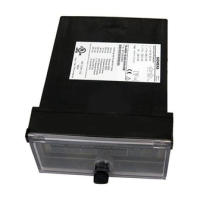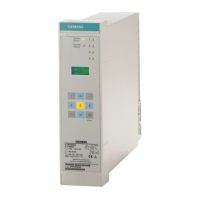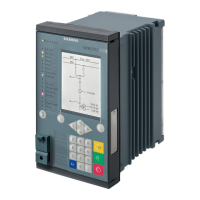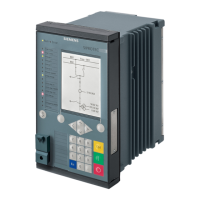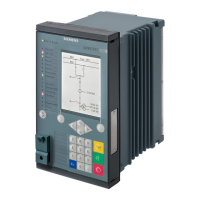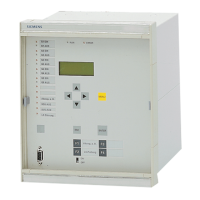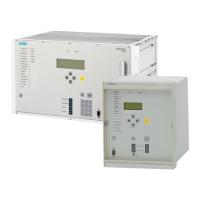present in the protected zone (common-mode reactor), 87L Isteady> must be set greater than the
maximum expected inrush current.
At address 1205 87L I min you can enter the threshold for releasing the pickup signal. The value should at
least correspond to the setting of 87L Idyn>, but not exceed the largest transformer rated current of the
constellation.
NOTE
When using different transformers in the constellation, set identical primary setting values. The secondary
setting values can be different.
Time Delays
The trip time delay for 87L Isteady> is set in address 1206 87L Trip Delay.
With the inrush current detection activated, the time delay 87L Trip Delay must be at least 20 ms for the
blocking by the inrush current detection to be effective. In resonant-grounded or isolated systems, transients
must have subsided before tripping takes place. The delay should be at least 3 cycles (60 ms at 50 Hz and 54
Ms at 60 Hz). For large systems, the time delay must be increased accordingly (see Figure 2-16).
At address 1208 87L: T EFdetect you set the time after which an evolving fault is detected. The param-
eter is enabled in resonant-grounded or isolated power systems. In the specified time, the 1-phase trip
command of the dynamic element 87L: T EFdetect is not forwarded to the tripping logic.
Address 1207 87L Man. Close allows you to set the behavior of the phase comparison protection for
manual closing for 87L Isteady>. In this case, tripping can be DELAYED or UNDELAYED (see Figure 2-16).
At parameter 1214 87L:Inrush blk. you can enable or disable the blocking function for the phase
comparison in case of inrush. If the parameter is enabled, tripping of the element 87L Idyn> is generally
delayed by one cycle. Inrush blocking can thus become effective.
Ground Current Differential Protection in Grounded Systems
The ground current differential protection of the 7SD80 operates as a stabilized (restrained) differential
protection in grounded systems. The 2 7SD80 devices exchange the phasors of the ground currents and the
associated restraining quantities over their protection interfaces. The restraining currents and the current
phasors are summed up in each device and compared to a pickup characteristic. In the event of an internal
short-circuit, the associated circuit breaker is tripped.
Funktionsbeschreibung
Basic Principle / Influencing Variables
In healthy operation, both ends of a line carry the same current. This current flows into one side of the consid-
ered zone and leaves it again on the other side. A difference in current is a clear indication of a fault within
this line section.
If the actual current transformation ratios are the same, the secondary windings of the current transformers
CT1 and CT2 at the line ends can be connected to form a closed electric circuit with a secondary current Ι; a
measuring element M which is connected to the electrical balance point remains at zero current in healthy
operation.
When a fault occurs in the zone limited by the transformers, a current i
1
+ i
2
which is proportional to the fault
currents
Ι
1
+ Ι
2
flowing in from both sides is fed to the measuring element. As a result, the simple circuit
ensures reliable tripping of the protection if the fault current flowing into the protected zone during a fault is
high enough for the measuring element M to respond.
2.2.3
2.2.3.1
Functions
2.2 Phase Comparison Protection and Ground Differential Protection
54 SIPROTEC 4, 7SD80, Manual
E50417-G1100-C474-A2, Edition 02.2018

